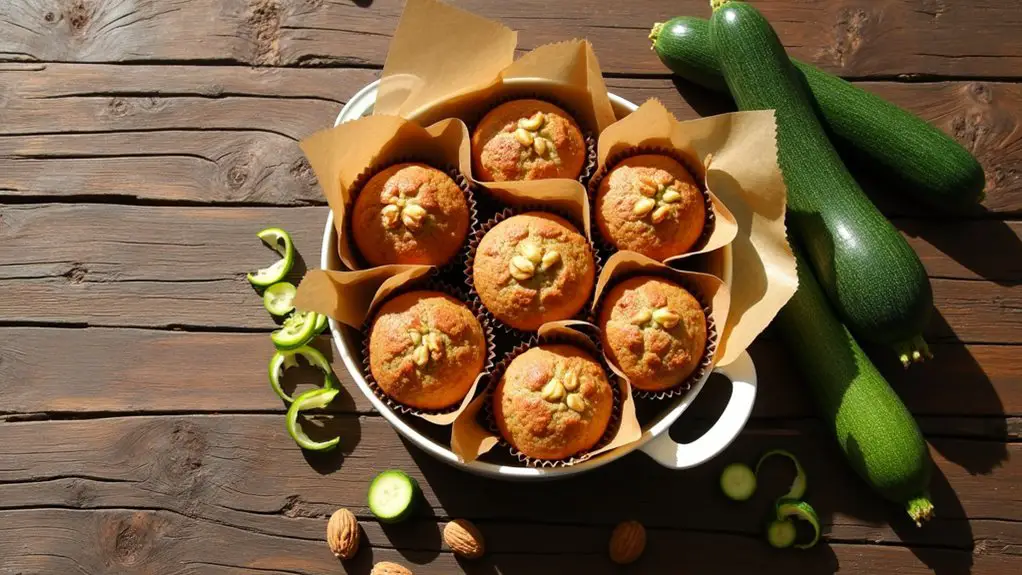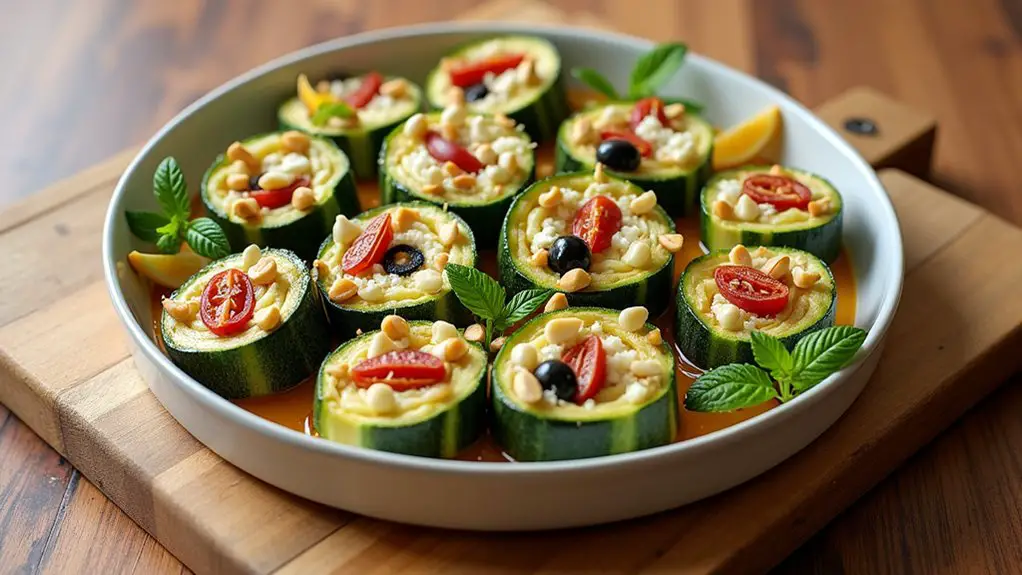Benefits of Zucchini and How To It Eat
The benefits of zucchini go far beyond its mild flavor and culinary versatility. Zucchini may look simple, but this versatile vegetable is a powerhouse of nutrition and health benefits. Low in calories yet rich in fiber, antioxidants, and essential vitamins, zucchini supports everything from digestion and heart health to weight management and skin vitality. Whether you’re sautéing it, spiralizing it into noodles, or blending it into soups, zucchini is a delicious way to nourish your body and enhance your meals. In this article, we’ll explore why adding more zucchini to your diet might be one of the easiest—and tastiest—ways to boost your well-being.
Introduction Zucchini
Zucchini, also known as courgette in some parts of the world, is a summer squash that belongs to the Cucurbitaceae family—alongside cucumbers, pumpkins, and melons. With its tender texture, mild flavor, and impressive adaptability, zucchini has earned its place in kitchens across the globe. It can be grilled, roasted, steamed, sautéed, spiralized into noodles, or even baked into desserts like muffins and breads.
Though technically a fruit (since it develops from the flower of the plant and contains seeds), zucchini is typically treated as a vegetable in culinary contexts. It comes in a variety of shades, most commonly green or yellow, and ranges from small and tender to larger, more mature forms used for stuffing or baking.
One of zucchini’s greatest appeals lies in its nutritional value paired with low calorie content, making it a favorite among health-conscious eaters and those following weight loss or anti-inflammatory diets. It’s packed with water, fiber, vitamin C, potassium, and other phytonutrients that support overall wellness.
Whether you’re new to zucchini or already a fan, understanding its origin, uses, and unique qualities can help you appreciate this humble vegetable in a whole new way.
Nutritional Profile
Zucchini is a nutritional gem, offering an impressive array of vitamins, minerals, and antioxidants—while being naturally low in calories and carbs. This makes it a perfect ingredient for a variety of healthy diets, including Mediterranean, keto, plant-based, and anti-inflammatory eating plans.
Here’s a look at the nutritional highlights of one cup (about 124 grams) of raw, sliced zucchini:

DV = Daily Value, based on a 2,000-calorie diet.
Zucchini is especially rich in antioxidants, including lutein, zeaxanthin, and beta-carotene, which help fight oxidative stress and protect eye and skin health. Its high water content and low glycemic index also make it an ideal food for blood sugar control and digestion.
Whether you’re trying to lose weight, improve your gut health, reduce inflammation, or just add more plant-based foods to your meals, zucchini delivers a powerful nutritional punch with every bite.
Key Health Benefits of Zucchini:
- Low in Calories, High in Nutrients: Zucchini is rich in vitamins A, C, and B6, plus minerals like potassium and manganese.
- Supports Digestive Health: Its high water and fiber content promotes healthy digestion and prevents constipation.
- Anti-Inflammatory Properties: Contains antioxidants like lutein and zeaxanthin that reduce inflammation and oxidative stress.
- Aids Weight Loss: Zucchini is filling, low in carbs, and can be used in place of higher-calorie ingredients.
- Good for Heart Health: The potassium and magnesium in zucchini help regulate blood pressure and support cardiovascular function.
- Promotes Eye Health: Rich in antioxidants that support vision and protect against age-related eye issues.
- Versatile in the Kitchen: From zoodles to baked chips, zucchini can be grilled, spiralized, stuffed, or blended into smoothies.
Anti-inflammatory and antioxidant properties
Zucchini is more than just a low-calorie vegetable—it’s also packed with compounds that help the body fight inflammation and oxidative stress, two underlying factors in many chronic diseases, including heart disease, diabetes, arthritis, and even certain cancers.
Rich in Antioxidants
Zucchini contains a wide variety of antioxidants, which are natural compounds that neutralize free radicals—unstable molecules that can damage cells and lead to inflammation over time. Some of the key antioxidants found in zucchini include:
Vitamin C: A powerful antioxidant that supports immune function and helps reduce inflammatory markers in the body.
Beta-carotene: A precursor to vitamin A that protects cells and supports skin, vision, and immune health.
Lutein and zeaxanthin: Plant compounds known for protecting eye health and reducing oxidative stress, particularly in the retina.
Polyphenols: Found in the skin of zucchini, these plant-based compounds help reduce inflammation and oxidative stress throughout the body.
Tip: To get the most antioxidant power, eat zucchini with the skin on—many of these compounds are concentrated there!
Natural Anti-Inflammatory Effects
Chronic inflammation is a key contributor to many degenerative diseases, and diet plays a major role in managing it. Zucchini can be a helpful ally thanks to its:
- High water content (about 94%), supports hydration and cellular detoxification.
- Dietary fiber, particularly pectin, promotes gut health and can help reduce inflammation in the digestive tract.
- Low glycemic index, which means it doesn’t spike blood sugar—important for controlling inflammation in people with insulin resistance or diabetes.
Gentle on the Gut
For individuals with inflammatory conditions such as IBS, Crohn’s disease, or autoimmune disorders, zucchini is a well-tolerated vegetable that provides nutrients without triggering symptoms. It’s soft when cooked, easy to digest, and unlikely to cause bloating or irritation.
Zucchini’s combination of antioxidants and anti-inflammatory nutrients makes it an ideal addition to any wellness-focused diet. Whether you’re sautéing it in olive oil, blending it into a soup, or enjoying it raw in salads, zucchini can help support a more balanced, anti-inflammatory lifestyle—deliciously.
How to include zucchini in your diet
One of zucchini’s greatest strengths is its culinary versatility—it can be enjoyed raw or cooked, in savory or even sweet dishes. Whether you’re aiming for weight loss, anti-inflammatory eating, or simply adding more vegetables to your meals, zucchini is an easy, delicious way to upgrade your plate.
Read more about 5 Easy Zucchini Smoothie Recipes for Glowing Skin: Delicious, nutrient-rich smoothies that incorporate zucchini for skin health and hydration.
Go to Irresistibly Easy Zucchini Recipes You’ll Want to Make Again and Again: Easy and creative recipes to help picky eaters enjoy their veggies.
1. Raw in Salads and Wraps
Zucchini has a mild, slightly sweet flavor and a crunchy texture when raw. Thinly slice or spiralize it to add freshness to:
- Mixed green salads
- Plant-based wraps
- Cold pasta or quinoa bowls
Tip: Lightly marinate raw zucchini in lemon juice and olive oil for extra flavor and easier digestion.
2. Sautéed or Roasted as a Side
Sautéing zucchini in olive oil with garlic and herbs is a classic Mediterranean preparation. Roasting slices or chunks with a drizzle of olive oil brings out its natural sweetness.
Ideas:
- Sauté with onions and bell peppers
- Roast with cherry tomatoes, eggplant, and red onion for a ratatouille-style dish
3. Spiralized into Zoodles (Zucchini Noodles)
Zucchini noodles are a popular low-carb substitute for traditional pasta. They can be served raw or lightly cooked and pair well with sauces like:
- Pesto
- Marinara
- Garlic and olive oil
4. Blended into Soups
Zucchini adds creaminess and nutrients to blended soups without overpowering the flavor. Try it in:
- Creamy zucchini and basil soup
- Mediterranean Vegetable Soup Recipe: Quick & Easy
5. Baked into Breads and Muffins
Yes, zucchini can be sweet, too! Grated zucchini adds moisture and fiber to baked goods:
- Zucchini Banana Muffins
- The Best Mediterranean Zucchini Bread – Light, Fluffy & Full of Flavor
- Chocolate zucchini brownies
6. Stuffed or Grilled
Larger zucchinis are ideal for stuffing with grains, beans, cheese, or lean meats. You can also slice zucchini lengthwise and grill it as a healthy BBQ side. Easy Chicken Rollatini Stuffed With Mozzarella Cheese
Bonus: Try Zucchini in…
- Frittatas or omelets
- Stir-fries with tofu or shrimp
- Casseroles or lasagnas (use zucchini as a pasta layer!)
Pro tip: Always keep zucchini on hand—it cooks quickly, pairs with nearly everything, and fits into breakfast, lunch, dinner, or snacks.
Cooking Tips And Common Mistakes
Zucchini is a dream ingredient—easy to cook, fast, and full of nutrients. But to make the most of its texture and flavor, it’s important to use the right techniques and avoid some common pitfalls.
Top Cooking Tips
- Don’t Overcook It Zucchini is made up of about 94% water. Cooking it too long can make it mushy and watery. Aim to sauté or roast it quickly over medium-high heat for the best texture.
- Salt It Before Cooking Lightly salting zucchini slices and letting them rest for 10–15 minutes helps draw out excess moisture. Pat them dry before cooking—this helps avoid soggy results.
- Use High Heat for Roasting Roast at 400–425°F (200–220°C) to help caramelize the edges and bring out a nutty, slightly sweet flavor.
- Leave the Skin On The skin is not only edible but packed with antioxidants like lutein and zeaxanthin. Plus, it helps the vegetable hold its shape during cooking.
- Spiralize Right Before Eating If making zoodles, spiralize them fresh and cook briefly—just 1–2 minutes. Overcooking will make them watery.
Common Mistakes to Avoid
- Using Too Much Oil: Zucchini absorbs oil quickly, which can make your dish greasy. Use just enough to coat the surface.
- Crowding the Pan: When roasting or sautéing, give the zucchini space to breathe. Crowding traps steam and leads to sogginess instead of a nice golden sear.
- Peeling It: Unless you’re working with an extra-large or overripe zucchini with tough skin, there’s no need to peel it. The skin adds color, texture, and nutrients.
- Ignoring the Seeds: Very large zucchinis can have tough seeds and spongy flesh. If yours is oversized, scoop out the seeds before cooking or use it for stuffing instead.
Mastering zucchini in the kitchen is all about preserving its natural texture and enhancing its mild flavor with the right techniques. With these simple tips, you’ll get perfect zucchini every time—crispy, tender, and full of flavor. Zucchini is more than just a humble green squash—it’s a nutritional powerhouse that fits beautifully into almost any diet. From its anti-inflammatory and antioxidant benefits to its gut-friendly fiber and low-calorie profile, zucchini supports your health in more ways than one. Even better, it’s incredibly versatile in the kitchen—whether you’re roasting it, spiralizing it, blending it, or baking it into sweet treats.
By understanding the benefits of zucchini and how to prepare it properly, you can turn this everyday vegetable into a delicious staple that enhances your meals and supports your wellness goals.
So, next time you’re at the market, grab a few fresh zucchinis—you’ll be amazed at just how many ways you can enjoy them!
More About Zucchini
Dive into the following articles to discover specific benefits, recipes, and uses of zucchini in your everyday life.
Zucchini in a Plant-Based Diet: A Must-Have Staple: Discover why zucchini is a favorite in vegan and vegetarian meal plans.
How to Cook Zucchini Without Making It Soggy: Practical cooking tips to retain nutrients and texture.
How To Make Delicious Zucchini Noodles
Seasonal Guide: When and How to Buy the Best Zucchini










